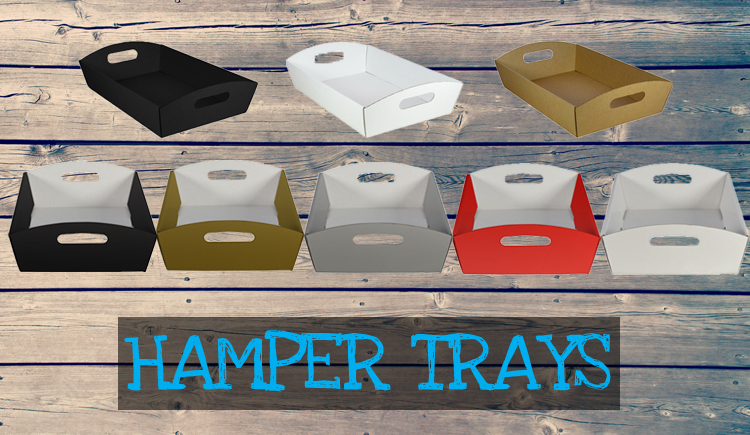Date Posted:7 September 2020
The Christmas season is a unique time mixed with good vibes, cram-shopping, excessive spending, and plenty of eating, all packed in two weeks of glorious celebrations.
Gift-giving is one of the bigger parts of the holidays, but for those with tons of friends from all walks of life, shopping for gifts can be a daunting task.
If you want a personal gift, but find it hard to shop for that one-of-a-kind gift, we recommend you go the hamper route.
Here are 5 main reasons why hampers will knock your gift-giving out of the park
1) Hampers are very versatile – Once you decide to go with a hamper box or tray, you’ll never run out of gift ideas. You can go with a very personalized ‘favorite things’ hamper for a loved one, or something as general as a mix of goodies that you can give out to coworkers, and other acquaintances.
2) One-quick fix to all your Christmas packaging – With hampers, you no longer need to choose different boxes, paper bags,
or wrapping papers for every gift you buy.
3) Everyone loves hampers – Who doesn’t love receiving packs of goodies? You can choose a wide range of products to include on your hamper, from adult-only items like wine, to kid-friendly items like candies and toys.
4) Hampers are reusable too! – Aside from the gifts you’re including on your hamper box or tray, the hamper as is also serves as a gift since it is reusable and made of sturdy materials that could withstand several uses.
5) Inexpensive alternative to gift baskets – Traditionally, hampers are bought from the store with a mix of products already included. These gift packs usually come as weaved baskets in various shapes and sizes, covered in cellophane paper and decorated with ribbons. Today, hampers are more affordable thanks to cardboard-manufactured hamper boxes and trays.
.jpg)
Now, let’s talk about the Types of Hampers…
Hampers come in two types: boxes and trays. Although they serve the same purpose when it comes to keeping a bunch of items in place, these two hampers are ideal for very different settings.
A hamper box is a large gift box available in different sizes and shapes to contain a number of items. At PACKQUEEN, our line of hamper boxes comes with square-shaped boxes with cover, tall rectangular upright boxes without lids, tall boxes with gable tops, octagon-shaped boxes, and carry-packs with built-in handles.
A hamper tray can hold just as much items as the hamper box, but these trays do not come with lids or covers. They are designed like traditional trays, along with a built-in handle for easier transport.

How to Assemble Your Hamper
Prepping Christmas hampers requires a mix of planning, budgeting, shopping, and finally, assembly of the hamper.
HAMPER PLANNING: Decide on a theme, budget, and types of items.
Planning is important because it ensures you are able to stick to your budget. Shopping blindly for items could add up pretty quickly. To avoid overspending, here are several things you should consider when planning your hampers:
List down your recipients. How many hamper boxes do you need? What sizes of hampers do you plan to give away? Write names of your recipients on a list, and categorize them into your chosen themes.
Choose a theme. The theme and types of items you choose will largely affect your budget. A wine and cheese hamper would be much more expensive to put together than a box filled with groceries. Other easy themes include coffee set; sweets box with chocolates, candies, and other treats; a beauty box filled with hair and skin products; homemade goodies such as preserves or spices; and a whole lot more.
A note about food: If you decide to go with a food-themed hamper, we recommend choosing items with expiration dates that extend beyond the holiday season. You can also customize food items by considering food allergies,or personal tastes of your friends, co-workers, and family members.
- Window-shop. Check out prices of ready-made hampers on local stores. You can do this either online, or by window-shopping at their stores. Seeing the contents and price would give you an idea of how much money you can allocate for each hamper. You can also list down prices for your materials, ingredients (if you’re planning to cook homemade goods), items, and other supplies you would need for assembling your hamper.
- Buying vs. assembly. By computing prices you’ve gathered during window-shopping, you can now estimate how much you need to spend for each hamper. Your do-it-yourself hamper should be priced at least 70% lower than ready-to-buy hampers.
- Shopping checklist. Once you’ve decided on a theme and allocated an amount for each hamper, create a shopping checklist to ensure you won’t go outside your budget. Categorize items as grocery, non-food, toiletries, gourmet, etc. Include a budget for décor, the Christmas hamper box or tray, and other packaging supplies.
SHOP FOR SUPPLIES: Buy early, buy bulk!
- Spot savings. If you can buy your Christmas hamper supplies at least a month earlier before Christmas, you’ll be able to avoid sky-high prices during the holiday season. Some stores also offer bulk prices, so make sure to look around before buying.
- Take advantage of sales. Avoid buying cheap products to meet your budget, but make sure to look out for sales. Many brands, grocery stores and shopping malls go on sale several weeks before the Christmas rush, so this is the best time to hunt for items on your checklist.
- Inexpensive décor. The secret to a good-looking Christmas hamper is arranging items to make your box or tray look fuller than it really is. While you have the option to buy as many items as you can to fill up a hamper box or tray, those with limited budget can create a “full look” by fluffing it up with tissue paper, shredded kraft paper, lining the base with fabric or gift wrappers, or adding Christmas-themed decorations such as tiny ornaments or snowflakes, and other inexpensive supplies.
SETTING UP THE HAMPER
Organizing your items into a hamper box or tray seems easy... but first-timers will definitely feel how much work is involved with a hamper arrangement.
1. Test Arrangement: Separate all items you’d like to include for your hamper, then test how you’d like to arrange them. If you’re using a box or tray with no lid, place heavy or tall items in the middle, with smaller items arranged around them. If the hamper has a cover, you can place bulky items sideways.
2. Lining: If you decide on placing a lining for your hamper, do it first before anything else. For luxury hampers, you’ll find that fabric like velvet could boost your hamper into extravagance level. Cheaper options include other types of fabric, felt, or gift-wrapping paper.
3. Fluffing: Lay your tissue paper onto the base, overflowing up to the top of your hamper. Don’t crumple the tissue paper yet. If you prefer shredded kraft paper or raffia, place them onto the box during this step. Not only will tissue paper, raffia or kraft paper help in fluffing your hamper up, they will also serve as protection for your items, particularly if the hamper includes bottled or fragile products.
4. Add in items: You can now add your items using the test arrangement you’ve decided on the first step.
Adjust as needed.
5. Decorate with trinkets: For a Christmassy vibe, place your snowflakes, ornaments, and other holiday-themed items in between your products to fill in gaps in the tray or box.
6. Double-check: For hampers with no lid, ensure your items are in place by shaking the box or tray gently. If your items move, add more fluffing until everything is set in place.
7. Finishing touches: Use cellophane to cover hampers with no lid, just as you would a gift basket. Tie it in with ribbons of your choice, and the hamper is good to go! ...Don’t forget to attach a tag with your Christmas greeting, the name of recipient and who it's from.
Now that you've completed one, proceed with the rest of your hampers.
Have fun creating your one-of-a-kind
Christmas hampers!


Let Us Know What You Thought about this Post